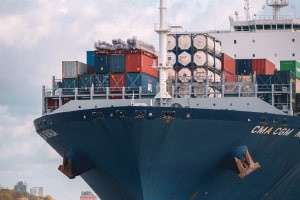This course explains the 1983 ‘International Convention for the Prevention of Pollution from Ships’ (also known as ‘MARPOL’). MARPOL’s Annex I covers the prevention of pollution by oil from operational measures and accidental discharges. We investigate how amendments to Annex I made it mandatory for new oil tankers to have double hulls and identify which annexes are mandatory for all MARPOL signatories and which are optional. We examine some exceptions that allow discharges before addressing the United States’ Oil Pollution Act (OPA) of 1990 to establish how the different tonnage cut-offs make it difficult to compare directly with MARPOL. We study how the sinking of the Erika off the coast of France in 1999 led to the strengthening of MARPOL requirements with respect to double hulling and inspections.
The course outlines applications, regulations and conditions for exemptions for segregated ballast tanks (SBT). We describe the double-hull and double-bottom requirements for oil tankers that prevent pollution from tankers carrying heavy-grade oil as cargo. We consider the accidental oil-outflow performance for tankers required after 2009 and their ‘damage assumptions’ and maximum tank-length. The course examines the damage resulting from the hypothetical outflow of oil and explains the formula for calculating its level established by assumed side and bottom damage. We analyze the conditions, applications and exemptions to the size and arrangement of cargo tanks. This course breaks down the permeability of allowed space and stability concerns. We help you understand the application and importance of ‘slop tanks’ and the discharge arrangement for tankers, including segregated or clean ballast, the ‘ballast water management convention’ (BWM), oil/water separation, interface detector, draining pipelines and pumps.
We take a close look at oil tanker regulations and requirements that curb marine oil pollution. We also establish the important role of the dedicated clean ballast tank system regulations, crude oil washing system, slop tank arrangement and oil residue (sludge) tank arrangement in preventing oil pollution from ships. The course analyzes the oil discharge monitoring and control system (ODME), tanker requirements, International Maritime Organization (IMO) guidelines, clean ballast tanks (CBT), ballast discharge, oil-filtering equipment and flag state duties. We lay out the functions and regulations of oil/water interface detectors, IMO resolutions, interface detectors, in-tank interface detection, water discharge valves and the oil record book (ORB). Finally, we address reception facilities, ship certifications and environmental awareness. This course combines marine engineering, marine environmental studies and maritime law to help anyone interested in learning how technology and the law can combine to keep our oceans safe from the kind of environmental disaster that can wreak devastating natural and economic damage.
What You Will Learn In This Free Course
- Discuss the Port State Control (PSC...
- List the equipment involved for dis...
- Analyze the shipboard oil pollution...
- Explain the importance of the SOPEP...
- Discuss the Port State Control (PSC ) inspections of machinery space as laid out in MARPOL Annex I
- List the equipment involved for discharge monitoring during cargo operations
- Analyze the shipboard oil pollution emergency plan (SOPEP)
- Explain the importance of the SOPEP for pollution prevention
- Outline the arrangements required for the reception of sludge on shore
- Identify the spill/pollution combating equipment that is available onboard
View All Learning Outcomes View Less All Alison courses are free to enrol study and complete. To successfully complete this certificate course and become an Alison Graduate, you need to achieve 80% or higher in each course assessment. Once you have completed this certificate course, you have the option to acquire an official certificate, which is a great way to share your achievement with the world.
Your Alison certificate is:
- Ideal for sharing with potential employers
- Great for your CV, professional social media profiles and job applications.
- An indication of your commitment to continuously learn, upskill & achieve high results.
- An incentive for you to continue empowering yourself through lifelong learning.
Alison offers 3 types of certificates for completed certificate courses:
- Digital certificate: a downloadable certificate in PDF format immediately available to you when you complete your purchase.
- certificate: a physical version of your officially branded and security-marked certificate
All certificates are available to purchase through the Alison Shop. For more information on purchasing Alison certificate, please visit our FAQs. If you decide not to purchase your Alison certificate, you can still demonstrate your achievement by sharing your Learner Record or Learner Achievement Verification, both of which are accessible from your Account Settings.

























 CPD Accredited
CPD Accredited
 Knowledge & Skills You Will Learn
Knowledge & Skills You Will Learn
 $137,330
$137,330


